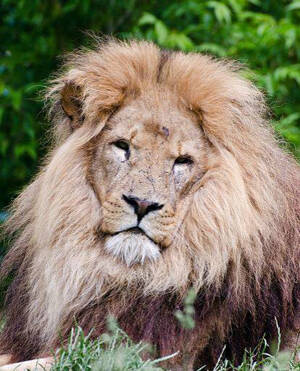
Panthera leo spelaea
Panthera leo spelaea,Felis leo major,European cave lion, Eurasian cave lion
Cave lion (scientific name: Panthera leo spelaea) synonymous scientific name···

Panthera leo somaliensis
Panthera leo somaliensis,Somali Lion
The scientific name of the Somali lion is Panthera leo somaliensis. It is th···

Panthera leo senegalensis
West African lion
The scientific name of the West African lion is Panthera leo senegalensis, a···

Panthera leo roosevelti
Panthera leo roosevelti,Abyssinian lion, Ethiopian lion
The scientific name of the Roosevelt lion is Panthera leo roosevelti, which ···

Panthera leo persica
Panthera leo persica,Asiatic Lion,Persian lion, lion
The Asiatic Lion (scientific name: Panthera leo persica) is a subspecies of ···

Panthera leo massaicus
East African lion, Masai lion
The Masai lion is the original subspecies of lion, commonly known as the Eas···

Panthera leo melanochaitus
Panthera leo melanochaitus,Cape Lion, Cape Lion, Cape Town Lion
The Cape lion (scientific name: Panthera leo melanochaitus), also known as t···

Panthera leo leo
Panthera leo leon,Barbary lion,North African lion, Atlas lion
Barbary lion (scientific name: Panthera leo leo), also known as North Africa···

Panthera leo krugeri
Panthera leo krugeri,South African Lion,Transvaal Lion, South African Lion, Katanga Lion
Kruger Lion (scientific name: Panthera leo krugeri) is also known as South A···

Panthera leo kamptzi
Panthera leo kamptzi,Cameroon Lion
Cameroon Lion (scientific name: Panthera leo kamptzi) is a subspecies of lio···

Panthera leo hollisteri
Panthera leo hollisteri
Kenyan lion (scientific name: Panthera leo hollisteri) is a subspecies of li···

Panthera leo vernayi
Panthera leo vernayi,Katanga Lion
The scientific name of the Kalahari lion is Panthera leo vernayi, which is o···

Panthera leo azandicus
Panthera leo azandicus,Northeastern Congo Lion,lion
Congo lion (scientific name: Panthera leo azandicus) is called Northeastern ···

Neofelis diardi
Neofelis diardi, Sunda Clouded Leopard, Enkuli Clouded Leopard, Sunda Clouded Leopard, Sunda Islands Clouded Leopard, Sundaland Clouded Leopard,Diade clouded leopard, Malayan clouded leopard
Sunda Clouded Leopard (scientific name: Neofelis diardi) English name Sunda ···

Lynx rufus
Lynx rufus,Bobcat,Bobcat, red lynx, North American bobcat, red cat
Bobcat (scientific name: Lynx rufus) is a cat species distributed in North A···

Lynx pardinus
Lynx pardinus,Spanish Lynx,Marco Pseudomarginatus, Iberian Lynx, Southern European Lynx
The Spanish lynx (scientific name: Lynx pardinus) is the largest cat species···

Lynx canadensis
Lynx canadensis,Canada Lynx
Canada Lynx (scientific name: Lynx canadensis) is also known as Canada Lynx ···

Leopardus jacobita
Leopardus jacobita,Andean Cat,Mountain cat, South American mountain cat, Andean mountain cat
Andean Tiger Cat (scientific name: Leopardus jacobita) is also known as Ande···

Leopardus wiedii
Leopardus wiedii,Margay
The long-tailed tiger cat (scientific name: Leopardus wiedii) is also known ···

Leopardus pardalis
Leopardus pardalis,Ocelot
Ocelot (scientific name: Leopardus pardalis) is also known as Ocelot in Engl···

Scandentia
Scandentia,Sino-Burmese tree shrew, Northern tree shrew
Tree shrews are highly adaptable and are distributed from low altitude areas···
